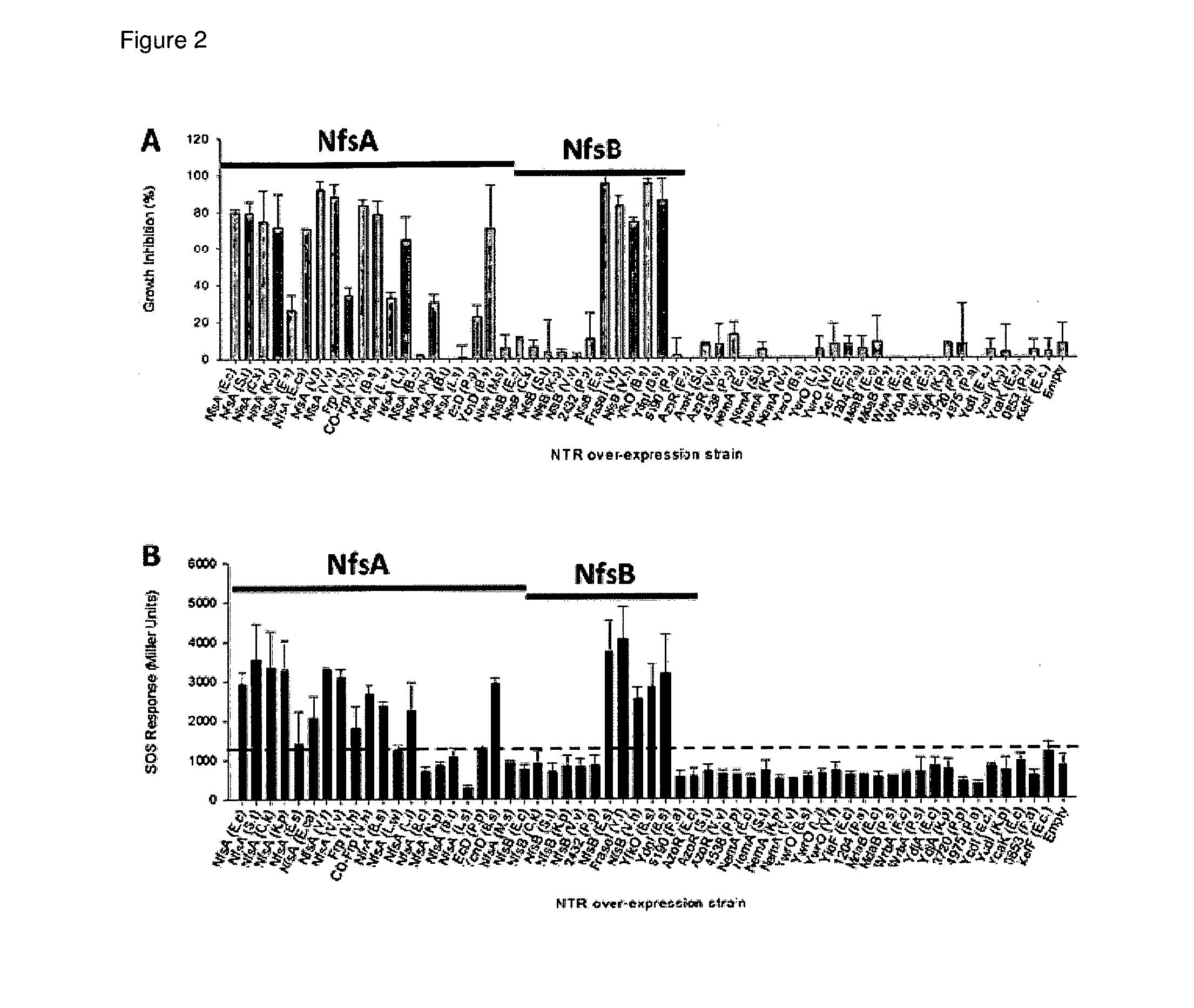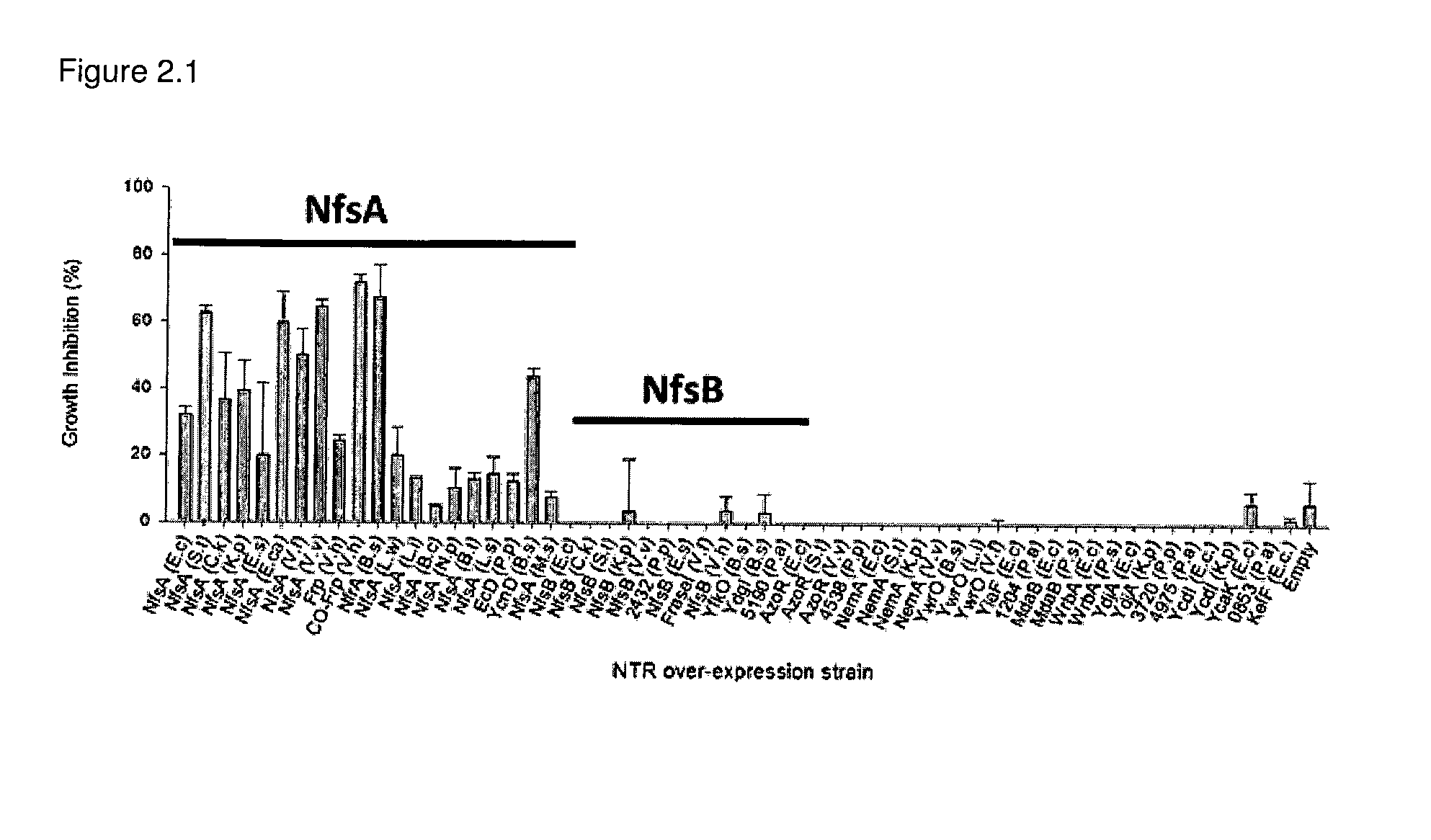Compounds And Methods For Selective Imaging And/Or Ablation
- Summary
- Abstract
- Description
- Claims
- Application Information
AI Technical Summary
Benefits of technology
Problems solved by technology
Method used
Image
Examples
example 1
Experimental for the synthesis of 2-methyl-5-nitroimidazol-1-N-2,2,3,3,3-pentafluoropropyl acetamide (67)
[0341]Swern oxidation of metronidazole (213) according to the reported method (WO 2008 / 008480 PCT / US2007 / 015970) provided crude 2-(2-methyl-5-nitro-1H-imidazol-1-yl)acetaldehyde 214 (3.08 g, 61%) which was used directly.
[0342]A solution of NaClO2 (16.47 g, 182.10 mmol) in water (65 mL) was added dropwise to a stirred mixture of 2-(2-methyl-5-nitro-1H-imidazol-1-yl)acetaldehyde 214 (3.08 g, 18.21 mmol) and 2-methyl-2-butene (48.23 mL, 455.24 mmol) in tert-butanol (260 mL), and NaH2PO4.4H2O (19.89 g, 127.47 mmol) in water (65 mL). The mixture was stirred overnight then acidified with HCl (10%, 200 mL). The aqueous phase was then extracted with EtOAc (×3) and the combined organic layers were washed with water and brine, dried, and concentrated under reduced pressure. The residue was triturated with petroleum ether to give 2-(2-methyl-5-nitro-1H-imidazol-1-yl)acetic acid 215 as a pal...
example 1.1
Experimental for the synthesis of 3-fluoro-2-(4-((4-nitro-1H-imidazol-1-yl)methyl)-1H-1,2,3-triazol-1-yl)propan-1-ol (97)
[0344]Potassium carbonate mediated alkylation of 4-nitroimidazole 216 with 3-bromoprop-1-yne according to the procedure described by Rao et al [Journal of Chemical Synopses, 1993, 12, 506-507] gave 4-nitro-1-(prop-2-yn-1-yl)-1H-imidazole 424.
[0345]A solution of 4-nitro-1-(prop-2-yn-1-yl)-1H-imidazole 424 (191.6 mg, 1.27 mmol) and 2-azido-3-fluoropropan-1-ol 431 (prepared according to the procedure described in WO2008 / 124651A2 PCT / US2008 / 059505) (212.5 mg, 1.78 mmol) in THF:t-BuOH:H2O (6.5 mL, 2.5:2.5:1.5) was treated with CuSO4.H2O (23 mg, 0.09 mmol) and sodium ascorbate (53 mg, 0.27 mmol). The reaction mixture was vigorously stirred overnight at the room temperature then diluted with CH2Cl2 and evaporated to dryness. The residue was purified by flash chromatography on silica gel eluting with EtoAc:Hexane followed by CH2Cl2:MeOH (9:1) to provide 3-fluoro-2-(4-((4-...
example 1.2
Experimental for the synthesis of 2-(4-((4-nitro-1H-imidazole-1-yl)methyl)-1H-1,2,3-triazol-1-yl)-3-(((2-nitrophenyl)sulfonyl)oxy) propyl acetate (367)
[0346]A solution of 4-nitro-1-(prop-2-yn-1-yl)-1H-imidazole 424 (950 mg, 6.29 mmol) and 2-azido-3-hydroxypropyl acetate 421 (prepared according to the procedure described in WO2008 / 124651A2 PCT / US2008 / 059505) (1 g, 6.28 mmol) in THF:t-BuOH:H2O (21 mL, 1:1:1) was treated with CuSO4.H2O (81.2 mg, 0.33 mmol) and sodium ascorbate (126 mg, 0.64 mmol). The reaction mixture was vigorously stirred overnight at the room temperature then diluted with CH2Cl2 and evaporated to dryness. The residue was purified by flash chromatography on silica gel eluting with EtoAc:Hexane followed by CH2Cl2:MeOH (9:1) to provide triazole 425 (1.1 g, 56%) as a white solid, m.p. 118-121° C. 1HNMR [(CD3)2SO]δ 8.40 (d, J=1.4 Hz, 1H), 8.29 (br, s, 1H), 7.94 (d, J=1.5 Hz, 1H), 5.43 (s, 2H), 5.23 (br, s, 1H), 4.90-4.84 (m, 1H), 4.47-4.39 (m, 2H), 3.82-3.81 (m, 2H), 1.9...
PUM
 Login to View More
Login to View More Abstract
Description
Claims
Application Information
 Login to View More
Login to View More - R&D
- Intellectual Property
- Life Sciences
- Materials
- Tech Scout
- Unparalleled Data Quality
- Higher Quality Content
- 60% Fewer Hallucinations
Browse by: Latest US Patents, China's latest patents, Technical Efficacy Thesaurus, Application Domain, Technology Topic, Popular Technical Reports.
© 2025 PatSnap. All rights reserved.Legal|Privacy policy|Modern Slavery Act Transparency Statement|Sitemap|About US| Contact US: help@patsnap.com



